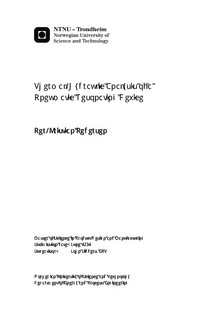Thermal-Hydraulic Analysis of a Pneumatic Resonating Device
Master thesis
Permanent lenke
http://hdl.handle.net/11250/234757Utgivelsesdato
2012Metadata
Vis full innførselSamlinger
Sammendrag
Resonator AS is developing a hammer drilling system suitable for oil and geothermal drilling. The nature of the device involves high speed linear motion at high frequencies. As a result of this, the gas springs used in their device are subject to high pressures and temperatures. To prevent pressure leakage from the device, seals are installed.The seals used in the device are fit for use in a limited range of temperatures and pressures. This pose a challenge since a high amount of heat is generated as a result of the friction between the seal and and the gas spring walls.The main objective of this thesis has been to develop a model to investigate the effects of the frictional heat. Control volume techniques have been used to model the effects on the gas pressure and temperature. A detailed heat transfer formulation comprising convection and conduction has been developed. To model the conduction it was necessary to derive two-dimensional heat transfer equations for cylindrical coordinates. A MATLAB-code has been written in order to simulate the behavior of the system.Test results have been compared with the simulations to validate the model. The comparison showed that the model described the thermal inertia of the system appropriately. It also showed that the present friction model is not able to describe the friction in a satisfactory manner.
